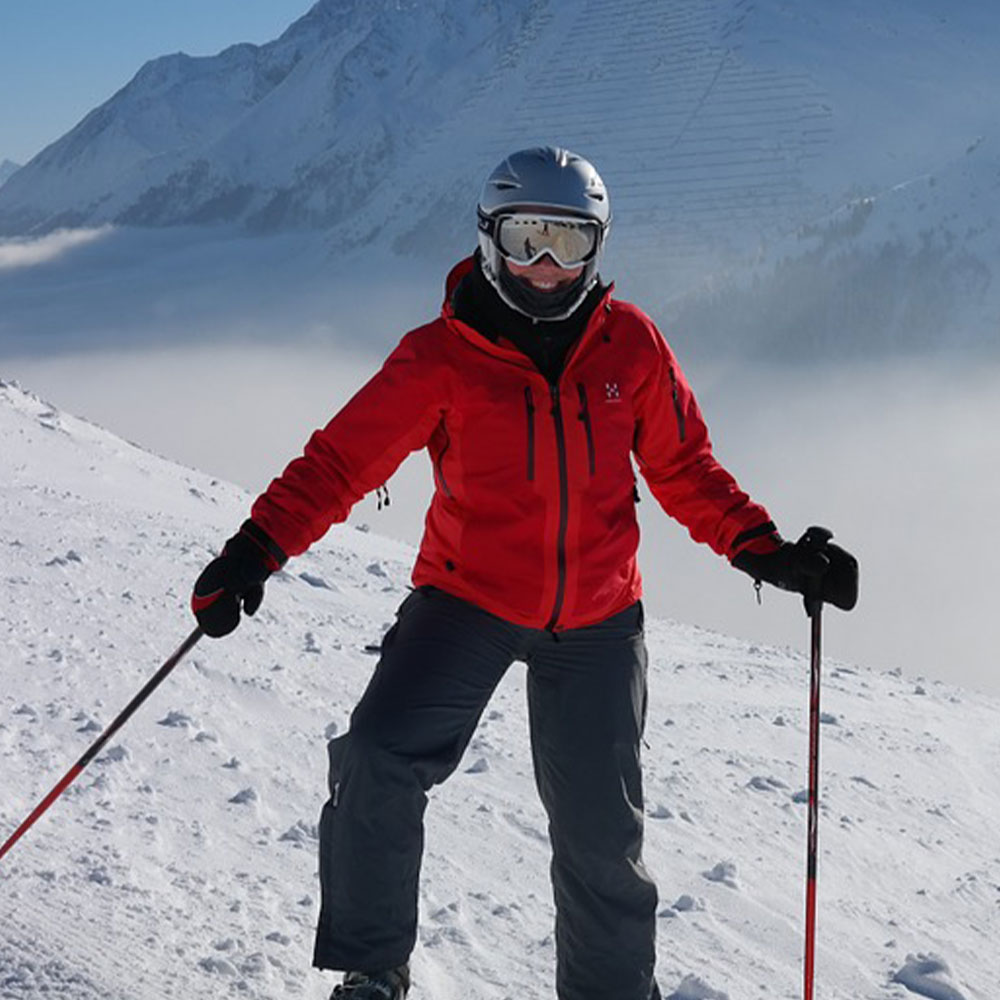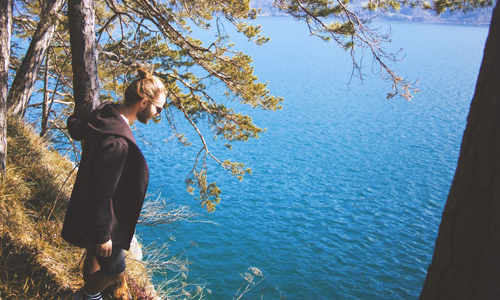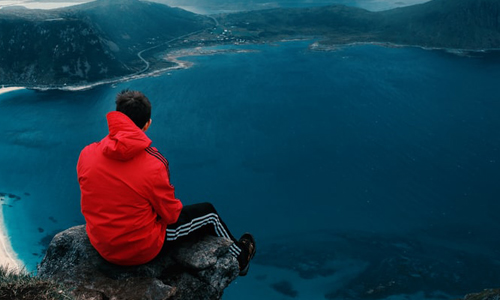Layering Up While Heading Out
Author

A keen runner, skier and nuts about cycling. Karl lives in Cumbria, where he loves encouraging his two children to follow in his outdoor lifestyle. Whilst out and about keeping active, Karl keeps a diary and shares it with Outdoor Look.
As adventurers, whenever we plan to hit the road, go on a hike, walk a trail or go for camping, the first question that pops into mind is the things that we would need to keep ourselves comfortable. While going outdoors, layering is important so that your body remains at a maintained temperature. In simple terms, layering helps in strategically avoiding your body to be exposed to the harsh weather or stay protected from sudden weather shifts with versatility.

The goal is to layer up with lightweight clothing instead of bulking up, so you can easily add or remove layers according to the weather. Important things to be considered-
- Are you headed for a cold or a hot region?
In case you are going for mountain climbing or camping in the woods or the hills, your layering will depend upon the temperature you are going to stay in
- Are you going for leisure or athleisure?
You need to determine if you would be active or procrastinate on your trip because activities make you feel hotter and you would want to shed off some layers
- Be prepared for weather shifts
As you head out in the winters or the summers, carrying a hat and gloves depends on keeping the temperature of the destination in account
- Inner Layer:
The base or the inner layer is the one that will stick to your skin during your trip. This layer should be made with a breathable material that would keep you dry. Most base layers are often wool, silk or synthetic based. Merino wool is a wool which provides warmth, is breathable, dries up quickly and resists body odour. There are lightweight base layers which are perfect for activities like cross country skiing, midweight layers are better for activities like skiing where you might start sweating during cold temperatures, while the heavy-weight are intended for activities in a less chilly area or in a case where you are not participating in any activities.
- Middle Layers
The mid layer is designed to be such a way that it could be worn over the inner layer. The type of layer you choose depends on the type of activities you are going to do. Some activities can make do with a lightweight fleece vest, or if you wish to have more warmth added to your attire, you can go for an insulated vest or even an insulated liner jacket that will help you on a really cold day. Don’t opt for something bulky but something that can provide you warmth even without the final layer.

- Final Layer
In an extremely bad weather and unforeseen coldness, this layer helps protect you against rain, snow or extreme winds. The Gore-Tex waterproof jacket has a breathable technology that helps to keep you dry as well as cosy. Traditionally, people used to opt for a two- or three-layer outer shell but with time, they are switching to lightweight options with a softer outer shell. These softer shells are typically made with technology fabric that provides more weather resistance and comfort.
I hope these tips will help you choose your attire for your next outdoor trip and you won’t feel too hot or too cold. Pick the right outfits for layering in order to enjoy a better and interesting time with your friends or family the next time you head out.
Author

A keen runner, skier and nuts about cycling. Karl lives in Cumbria, where he loves encouraging his two children to follow in his outdoor lifestyle. Whilst out and about keeping active, Karl keeps a diary and shares it with Outdoor Look.
Categories
- Sport (28)
- Product Reviews (3)
- Team Outdoor Look (7)
- Mike Wild (2)
- Mike Payton (2)
- Suse Hammond-Pears (3)
- Snowboarding (12)
- Latest Offers (105)
- Shop Talk (1)
- Competitions (7)
- Walking (413)
- Lifestyle Fashion (8)
- Travel (86)
- Kit Guides (176)
- Workwear Clothing (6)
- Safety Workwear (4)
- Health/Fitness (289)
- Skiing (91)
- Great Outdoors (1316)
- Cycling (92)
- January 2025
- December 2024
- November 2024
- October 2024
- September 2024
- August 2024
- July 2024
- June 2024
- May 2024
- April 2024
- March 2024
- February 2024
- January 2024
- December 2023
- November 2023
- October 2023
- September 2023
- August 2023
- July 2023
- June 2023
- May 2023
- April 2023
- March 2023
- February 2023
- January 2023
- December 2022
- November 2022
- October 2022
- September 2022
- August 2022
- July 2022
- June 2022
- May 2022
- April 2022
- March 2022
- February 2022
- January 2022
- December 2021
- November 2021
- October 2021
- September 2021
- August 2021
- July 2021
- June 2021
- May 2021
- April 2021
- March 2021
- February 2021
- January 2021
- December 2020
- November 2020
- October 2020
- September 2020
- August 2020
- July 2020
- June 2020
- May 2020
- April 2020
- March 2020
- February 2020
- January 2020
- December 2019
- November 2019
- October 2019
- September 2019
- August 2019
- July 2019
- June 2019
- May 2019
- April 2019
- March 2019
- February 2019
- January 2019
- December 2018
- November 2018
- October 2018
- September 2018
- August 2018
- July 2018
- June 2018
- May 2018
- April 2018
- March 2018
- February 2018
- January 2018
- December 2017
- November 2017
- October 2017
- September 2017
- August 2017
- July 2017
- June 2017
- May 2017
- April 2017
- March 2017
- February 2017
- January 2017
- December 2016
- November 2016
- October 2016
- September 2016
- August 2016
- July 2016
- June 2016
- May 2016
- April 2016
- March 2016
- February 2016
- January 2016
- December 2015
- November 2015
- October 2015
- September 2015
- August 2015
- July 2015
- June 2015
- May 2015
- April 2015
- March 2015
- February 2015
- January 2015
- December 2014
- November 2014
- October 2014
- September 2014
- August 2014
- July 2014
- June 2014
- May 2014
- April 2014
- March 2014
- February 2014
- January 2014
- December 2013
- November 2013
- October 2013
- September 2013
- August 2013
- July 2013
- June 2013
- May 2013
- April 2013
- March 2013
- February 2013
- January 2013
- December 2012
- November 2012
- October 2012
- September 2012
- August 2012
- July 2012
- June 2012
- May 2012
- April 2012
- March 2012
- February 2012
- January 2012
- December 2011
- November 2011
- October 2011
- September 2011
- August 2011
- May 2010
- April 2010
- March 2010
- February 2010
- January 2010
- November 2009
- October 2009
- September 2009


Submit a Comment